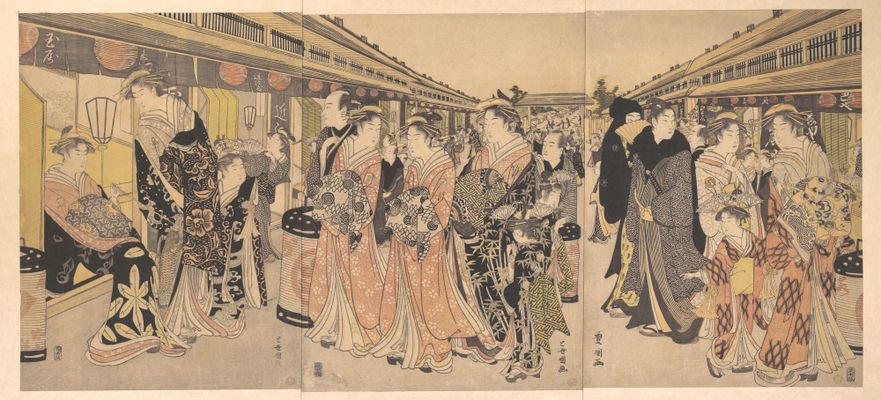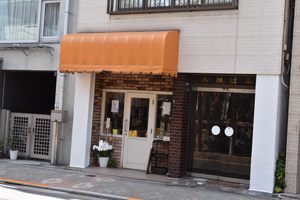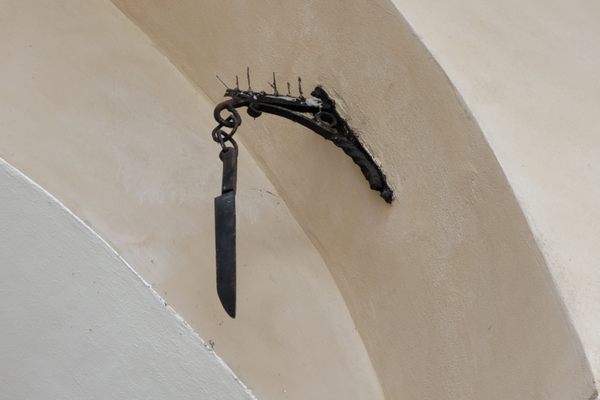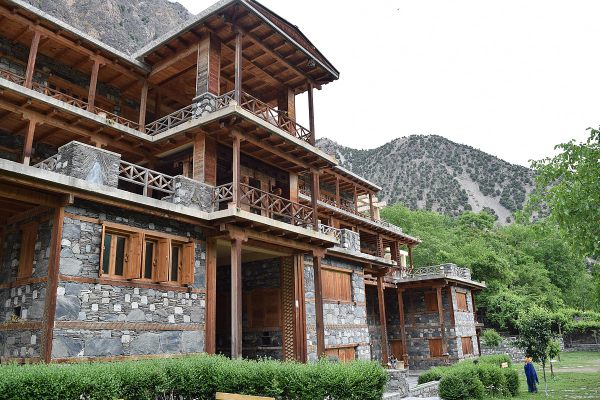About
Yoshiwara was an infamous red-light district of Edo (today's Tokyo) that flourished between the 17th and 19th centuries, extending for roughly 16 acres in its heyday. A place of extreme extravagance and decadence, the samurai of the Edo period frequented the area seeking romance that was, to quote a contemporaneous expression, “fleeting as a bubble.”
Historically, neighborhoods like Yoshiwara were known as yūkaku, the word signifying a government-sanctioned red-light district surrounded by a high-fenced moat. Whereas beautiful courtesans of a higher rank—known as oiran—enjoyed their luxuries and comfort, other sex workers had to endure constant misery and a myriad of health-related risks, as one could easily imagine.
A center of contemporary culture (with obvious benefits, of course), Yoshiwara was a highly popular spot among the menfolk of Edo, while the flamboyant fashion of the oiran was adored and often imitated by common women, influencing the vogue of the era. Isolated from the rest of society, it was considered a whole other world of dazzling, gorgeous glamour.
Whether high- or low-ranked, however, the women of Yoshiwara were very rarely allowed to leave the district. Often sold by their own families into indentured servitude, many of them were forced to remain in their profession for a term of ten years. The area was enclosed by a deep, ten-yard-wide moat called the Ohaguro Ditch, which was created in order to prevent the poor sex workers from escaping.
The word ohaguro refers to the ancient Japanese custom of teeth blackening, and the moat's name seems to have been inspired by its color, which was darkened by the sewage that filled it. The only way in and out was a strictly-guarded arch called the Great Gate; it was nearly impossible to flee the yūkaku of Yoshiwara.
While the area remains to be an adult entertainment district of a much smaller scale today, the historic Yoshiwara is all but gone, destroyed by a number of great fires as well as by the Prostitution Prevention Law of 1956. Its only remnant is what seems to be an ordinary block of stone, located on the edge of a parking lot, but is actually the ruins of the walls that once surrounded the Ohaguro Ditch.
Once having fully served their decade-long terms, the sex workers were well received and treated by the public, many common families welcoming them as brides and appreciating their famed beauty. Though the site of Yoshiwara’s historic yūkaku has become a popular subject of fiction and minor tourism over the years, its last surviving remains stand unknown to most, a forgotten testament of the unromanticized hardships of sex work in pre-modern Tokyo.
Related Tags
Know Before You Go
Unless you take a bus, the Yoshiwara area is a little less than a half-hour's walk from either Asakusa or Ueno Station.
The other historic sites of Yoshiwara include Jokan-ji Temple, where many yūjo of Yoshiwara are buried, and the so-called Looking-back Willow Tree, beside which men would look back longingly at the yūkaku after spending a time there, a subject of many senryū poems.
Community Contributors
Added By
Published
March 12, 2021

























